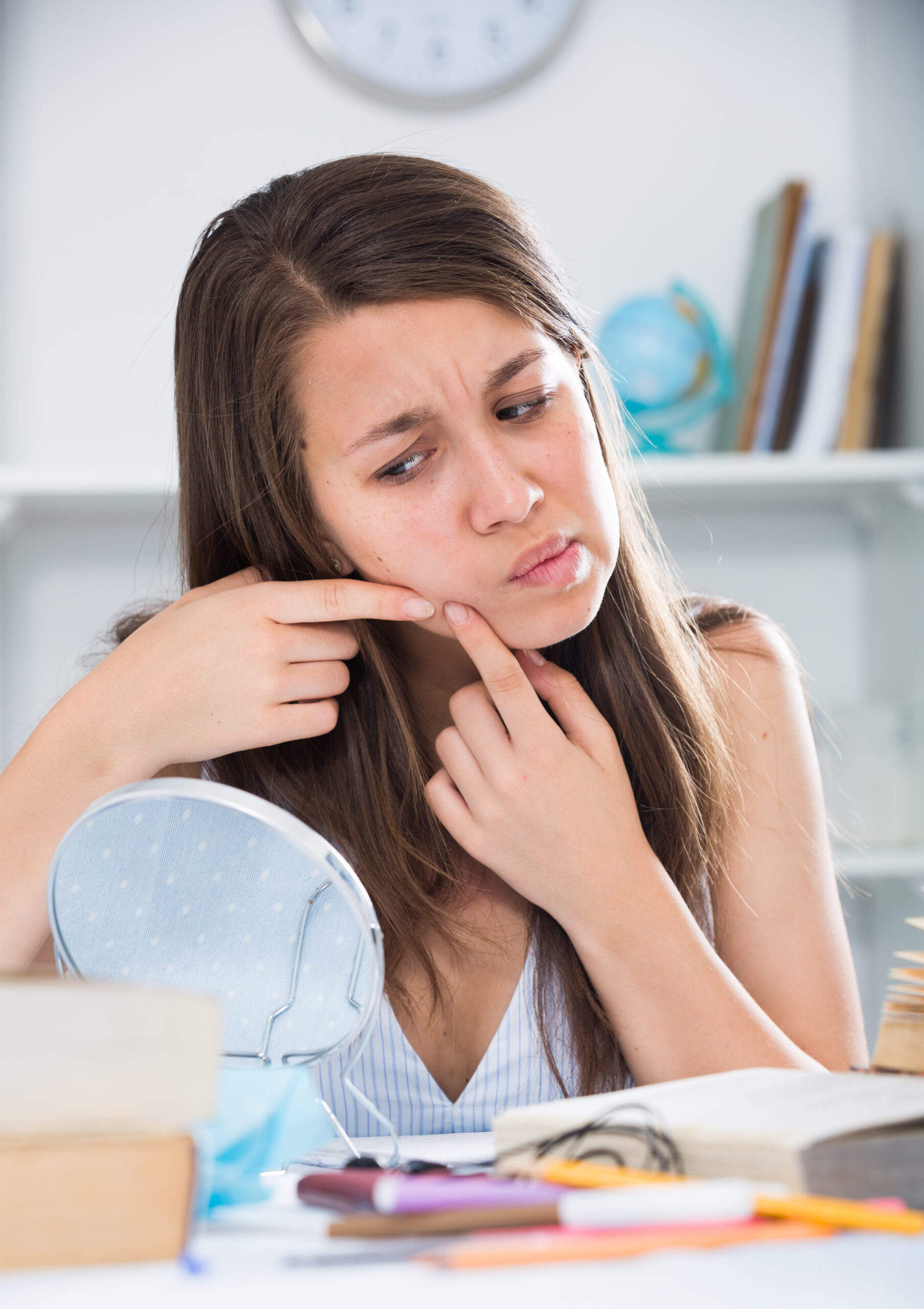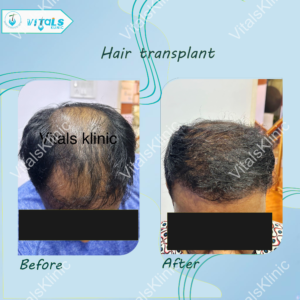PRP vs Hair Transplant: Which Is Better for You?
PRP vs Hair Transplant: Differences, Benefits, and Best Option for You Hair loss is a concern that affects both men and
Date :15-Jul-2025

ACNE vs PURGING – Vital Differences You Must Know to Save Your Skin
You just started a new skincare routine and suddenly your face is breaking out. Panic sets in. Is this normal? Is your skin reacting or rejecting the product? Understanding the difference between acne vs purging can save your skin and your sanity. In this detailed guide, we’ll break down the major distinctions, explore purging vs breakout differences, and provide practical solutions so you don’t throw away a potentially great product or delay proper treatment.
What is Acne?
Acne is a chronic inflammatory condition that affects millions worldwide. It results from clogged pores, excess oil production, bacteria, and often hormonal imbalances. Acne isn’t just a teenage problem; adults struggle with it too.
Causes of Acne
Acne is caused by several factors working together. These include overactive sebaceous (oil) glands, a buildup of dead skin cells, hormonal fluctuations (especially in women during menstrual cycles), and bacterial overgrowth — particularly Propionibacterium acnes. Stress, poor diet, and using comedogenic (pore-clogging) products can make it worse.
Symptoms of Acne
Common symptoms include blackheads, whiteheads, red papules, pustules, and deep, painful cysts. Acne typically appears on the face, chest, shoulders, and back. It often leads to scarring or hyperpigmentation if left untreated or improperly managed.
Types of Acne
There are several types, including:
What is Skin Purging?
Skin purging is a temporary response to skincare products that increase cell turnover. This process brings blockages to the surface faster than usual, making your skin look worse before it gets better. It’s especially common when starting products like retinoids, acids, or exfoliants.
Causes of Skin Purging
Certain ingredients are known to cause purging. These include:
These ingredients speed up your skin’s natural shedding process. That means any blockages or microcomedones (tiny clogged pores) hidden beneath the surface are pushed out more rapidly.
Acne Purging Signs and Symptoms
Purging breakouts tend to occur in areas where you normally get acne. The pimples are generally small and short-lived — they often clear up faster than typical acne. You may notice mild irritation, flaking, or redness, but the key sign of purging is that it resolves within 4 to 6 weeks. Unlike typical breakouts, these bumps are part of the renewal process.
Acne vs Purging – Key Differences
Here’s where purging vs breakout differences really matter. Misidentifying purging as acne — or vice versa — can lead you to stop using a product that your skin actually needs, or continue using one that’s harming your skin.
Time Duration
One of the biggest differences is how long each lasts. Purging usually lasts for 2 to 6 weeks. If the breakout continues beyond that timeframe, it’s most likely acne. Acne, on the other hand, tends to persist unless it’s treated properly with the right skincare or medication.
Location on the Skin
Another distinguishing factor is where the breakouts occur. Purging shows up in areas you typically break out, such as your T-zone, chin, or cheeks Acne, especially if triggered by irritation or comedogenic products, can appear in new or unusual locations on your face or body.
Appearance and Texture
While both purging and acne may appear similar at first glance, purging generally looks like small whiteheads or minor pimples. They come and go quickly. Acne often presents as red, inflamed pimples, cysts, or nodules that can linger, grow, or worsen over time.
Cause of Trigger
Perhaps the most crucial difference lies in the trigger. Skin purging is caused by active ingredients in skincare that are meant to exfoliate or renew the skin. Acne, on the other hand, can be triggered by hormonal shifts, stress, bacteria, diet, or comedogenic products. If your skin flares up after starting an exfoliant or retinoid, it’s likely purging — at least initially.
How to Tell If It’s Acne or Purging
Still confused? Here’s how to tell:
If the breakouts appeared shortly after using a new product with active ingredients and are located in your usual acne-prone areas, it’s likely purging. If you’re getting breakouts in unusual places, and they’re not improving after 4 to 6 weeks, it’s probably acne.
Other clues: purging pimples tend to be more uniform in shape and size, while acne varies and may include painful cysts. Also, if the skin shows signs of improvement beneath the breakout, that’s another hint it’s purging.
Common Skincare Ingredients That Cause Purging
If you’re seeing purging, check your skincare for these common culprits:
Introducing these gradually — such as once every two or three days — can minimize purging severity.
How to Manage Acne
Dealing with acne requires consistency and the right products. Here’s how to manage it:
Maintaining a healthy diet and reducing sugar or dairy may also help, though results vary.
How to Manage Purging
Purging doesn’t need aggressive treatment — patience is key. Here’s what to do:
Remember, if purging lasts more than 6 weeks, consult a dermatologist.
When to See a Dermatologist
If you’re unsure whether you’re purging or breaking out, or if your skin is reacting severely, it’s always smart to seek expert advice. Visit a dermatologist at vitalsklinic in bangalore if:
At VitalsKlinic, our expert dermatologists begin with a detailed skin consultation to accurately differentiate between acne and purging — a crucial step before any treatment. We assess your skin’s response to current skincare products, lifestyle, and medical history to understand whether the breakout is a result of active ingredients (purging) or underlying acne conditions. For purging, we recommend a gentle, supportive skincare routine with hydrating and barrier-repairing treatments to allow your skin to adapt. For true acne, we offer customized solutions such as medicated topical treatments, chemical peels, acne laser therapy, or oral medications, depending on severity. Our team monitors your progress closely and adjusts treatment plans to ensure optimal results with minimal irritation. At VitalsKlinic, our goal is to restore your skin’s health with science-backed care tailored to your unique needs.
Conclusion
Understanding the purging vs breakout differences is essential to maintain healthy skin and avoid missteps in your skincare journey. Acne and purging may look alike, but their causes, duration, and management are entirely different. If you’re starting a product with active ingredients and notice breakouts in familiar places, you’re probably purging. But if things don’t improve after six weeks or get worse, it might be acne — and it’s time to take action.
Stay patient, be gentle with your skin, and don’t hesitate to seek professional help when needed. Healthy skin is a journey, not a race.
visit: www.vitalsklinic.com
PRP vs Hair Transplant: Differences, Benefits, and Best Option for You Hair loss is a concern that affects both men and

10 Essential Questions You Should Ask Before a Hair Transplant When considering a hair transplant, it’s natural to feel both excited

Say Goodbye to Unwanted Hair: Pros & Cons of Laser Hair Reduction Introduction Tired of constantly shaving or waxing? You’re not alone!